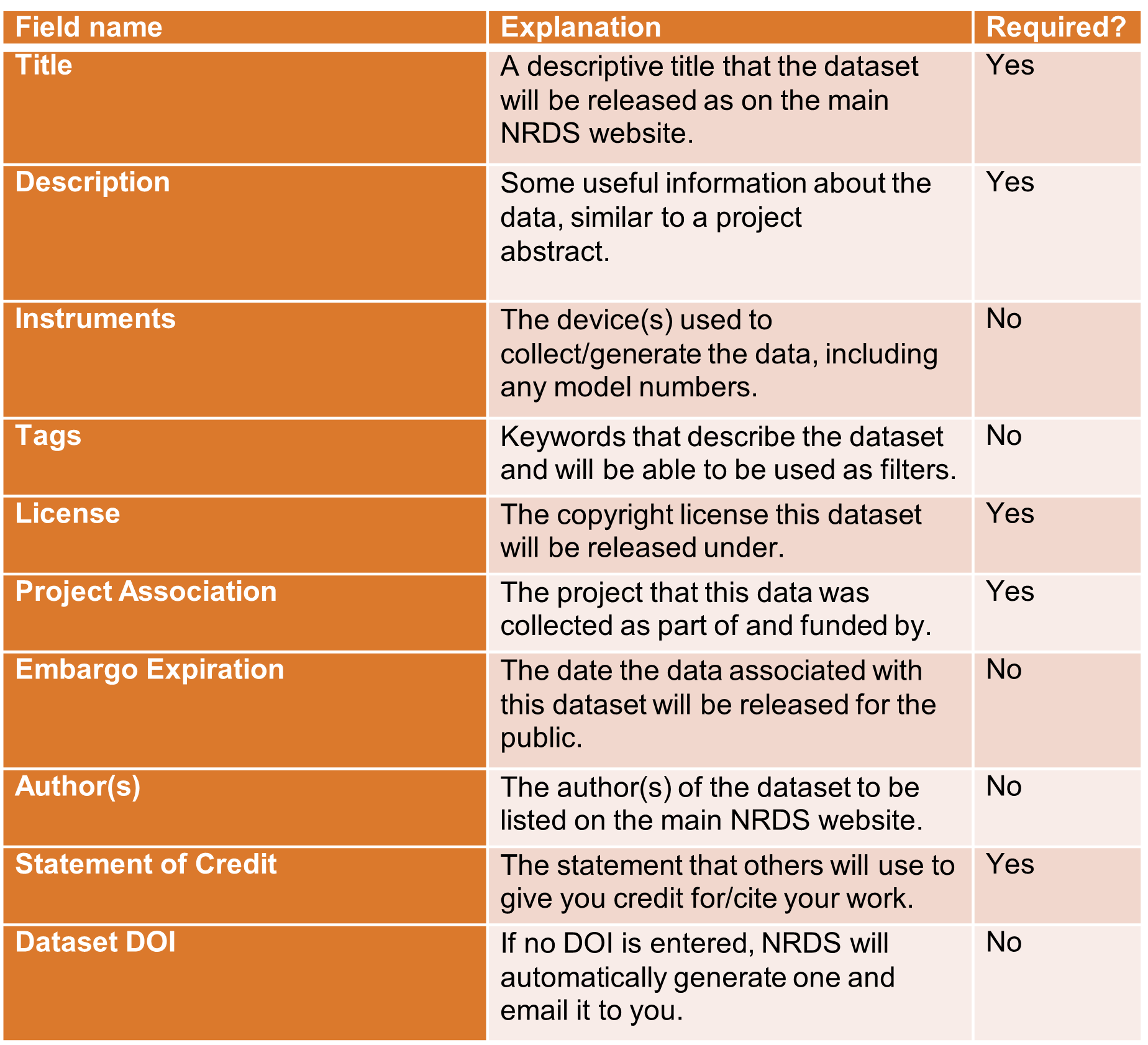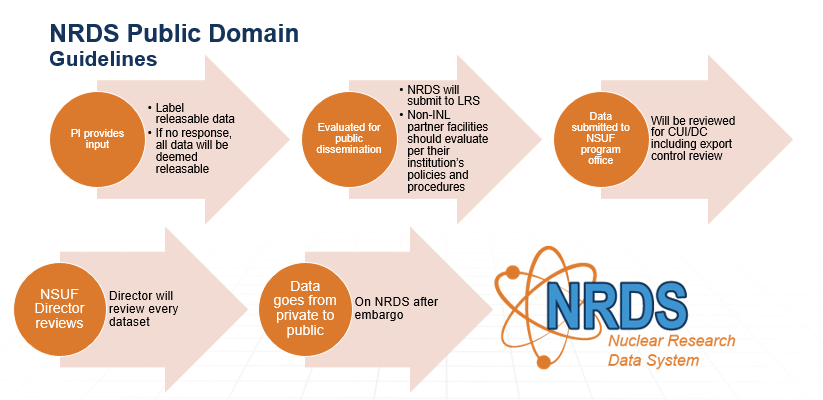About
What is NRDS?
The Nuclear Research Data System (NRDS) is a public-facing data storage solution for nuclear energy researchers, featuring integrated compute resources such as artificial intelligence enabled hardware, and access to graphics processing units (GPUs). Operated out of the US Department of Energy Office of Nuclear Energy's Nuclear Science User Facilities (NSUF) program, NRDS takes publicly funded data from NSUF research and makes it accessible to the public without requiring a paywall or account.
Making Data FpAIRe
The main goal of NRDS is to make all NSUF data meet the following criteria:
- Findable - NRDS files are sorted according to organization, project, and dataset. Search features allow users to find data using inputs such as tags, data formats, projects, and keywords.
- Peekable - Different data types, such as PDFs, spreadsheets, text files, images, videos, etc., can be viewed via the NRDS website without requiring any download.
- Accessible - Content can be assigned a licensing attribute such as the Creative Commons attribution (the default license), meaning the data is open-sourced and publicly available, with no account required.
- Interoperable - PIs and project members can upload and collaborate on datasets within their project on the NRDS Portal before having them become public.
- Reusable - Data is stored on HPC systems to allow for data to be used on other projects in the future.
- Extensible - Annotation features will provide capabilities to give new life to data through AI analysis, enabling new discoveries.
- For information on AI Analysis, click here
NSUF Compute Capability
NSUF sponsors the computing power found at Idaho National Laboratory’s High Performance Computing (HPC) datacenter. These supercomputers currently include Bitterroot, Sawtooth, Lemhi, and Hoodoo. Along with 1.2 PB of storage for NRDS data, with plans to expand to meet the needs of the user community. Click here to create an HPC account and start running computing jobs on NRDS data.
Adding Data to NRDS
NRDS is comprised of two sites, the NRDS site and NRDS Portal. NRDS is the main public site where all data resides after embargo expiration and the NRDS Portal is a companion workspace site. The NRDS Portal allows for data uploads and project collaboration before releasing the data to the public. NSUF accounts are required in order to upload data to NRDS. To get an account please click here. All metadata will be defined here as well.
Collected Metadata Fields

The NRDS Portal
All data uploaded to the NRDS Portal workspace will remain private until the expiration of the embargo period for the project. All data is stored within a project folder allowing anyone within the project to have access to the data once each user accepts the NSUF COI Read and Acknowledge Statement within the NRDS Portal. Any NSUF collected raw data should be uploaded to the NRDS Portal, along with any metadata. Data beyond raw data may be uploaded to NRDS at the discretion of the project team. Any data in NRDS is subject to the rules and guidelines for NRDS. All data will be given a DOI if data does not already have one. Documents generated by the project team including irradiation testing analyses, loading plans, characterization reports, etc. may be uploaded by the NSUF program office in order to give context to the raw data. Release of these documents would be on the same timeframe as other data. Prior to the private to public domain push, the PI and NSUF director (or director-identified NSUF program office representative) shall concur on the released datasets.
